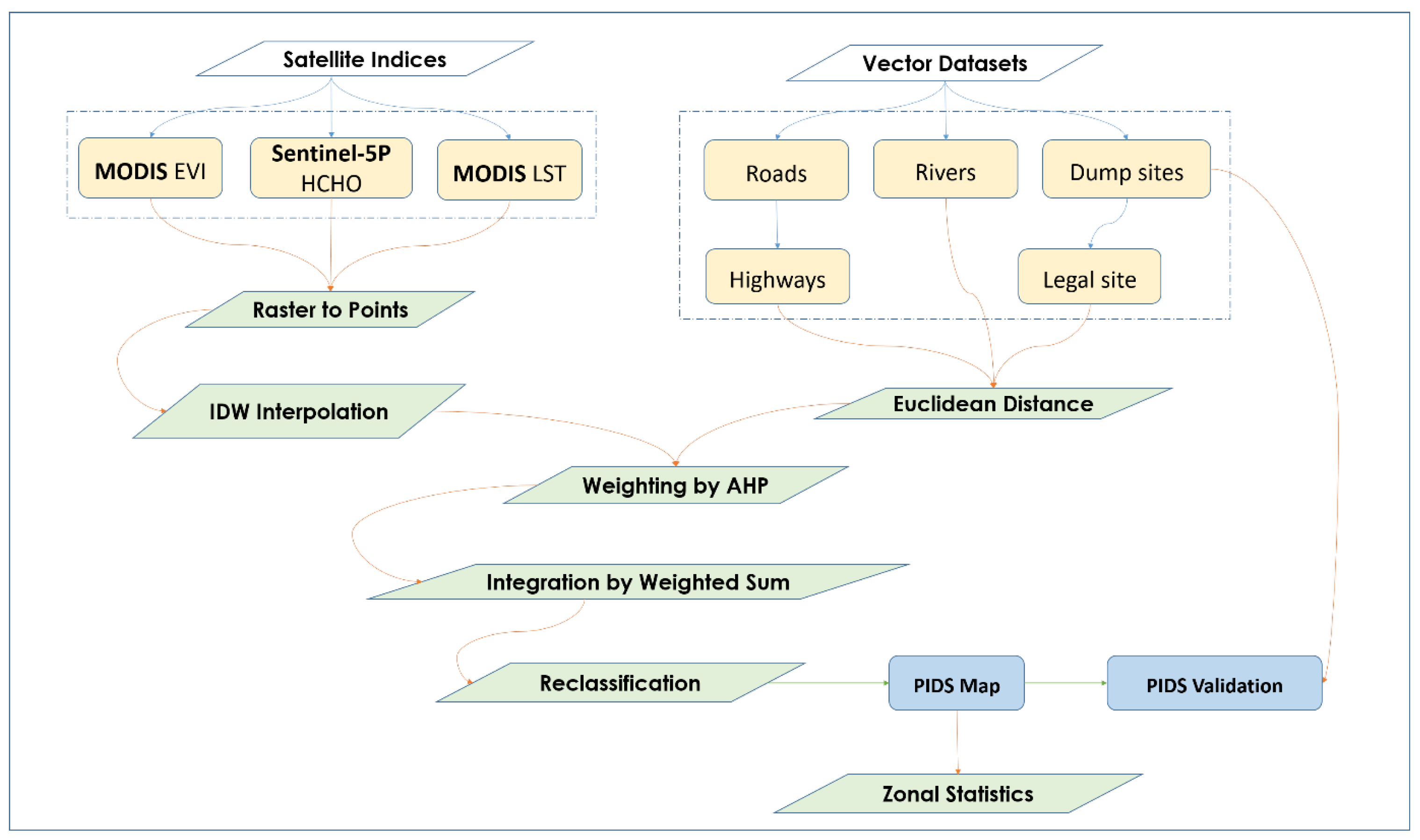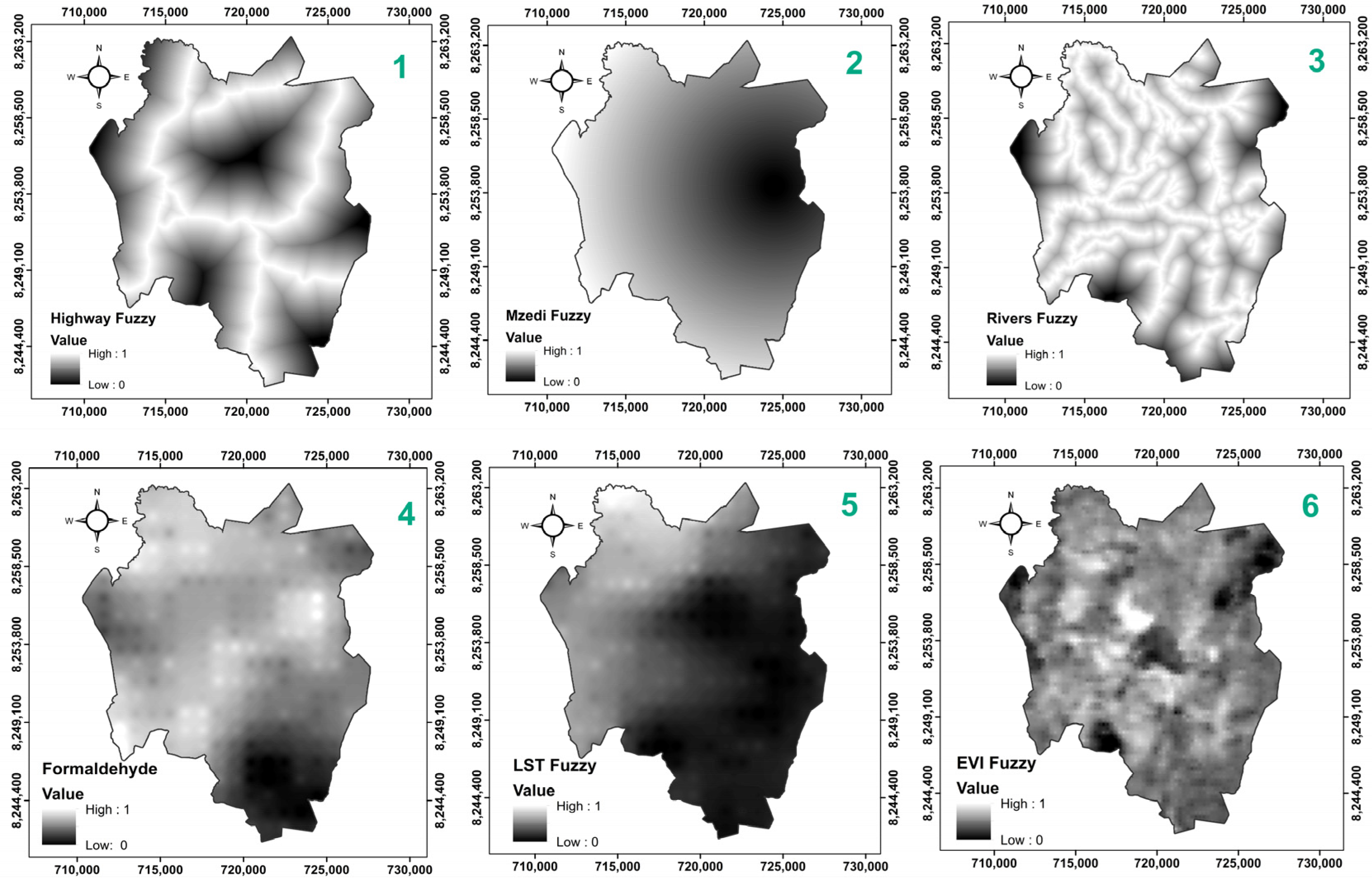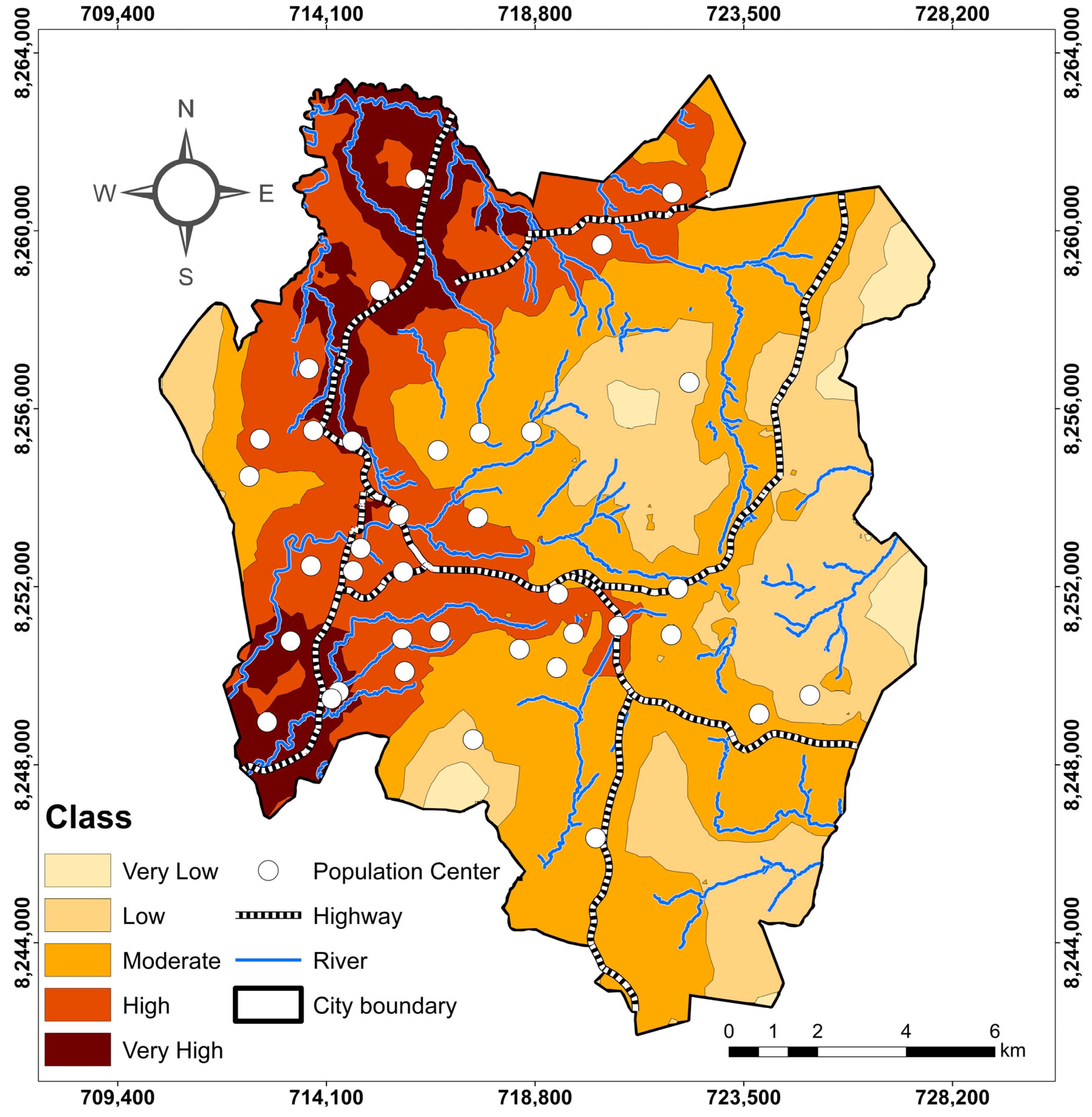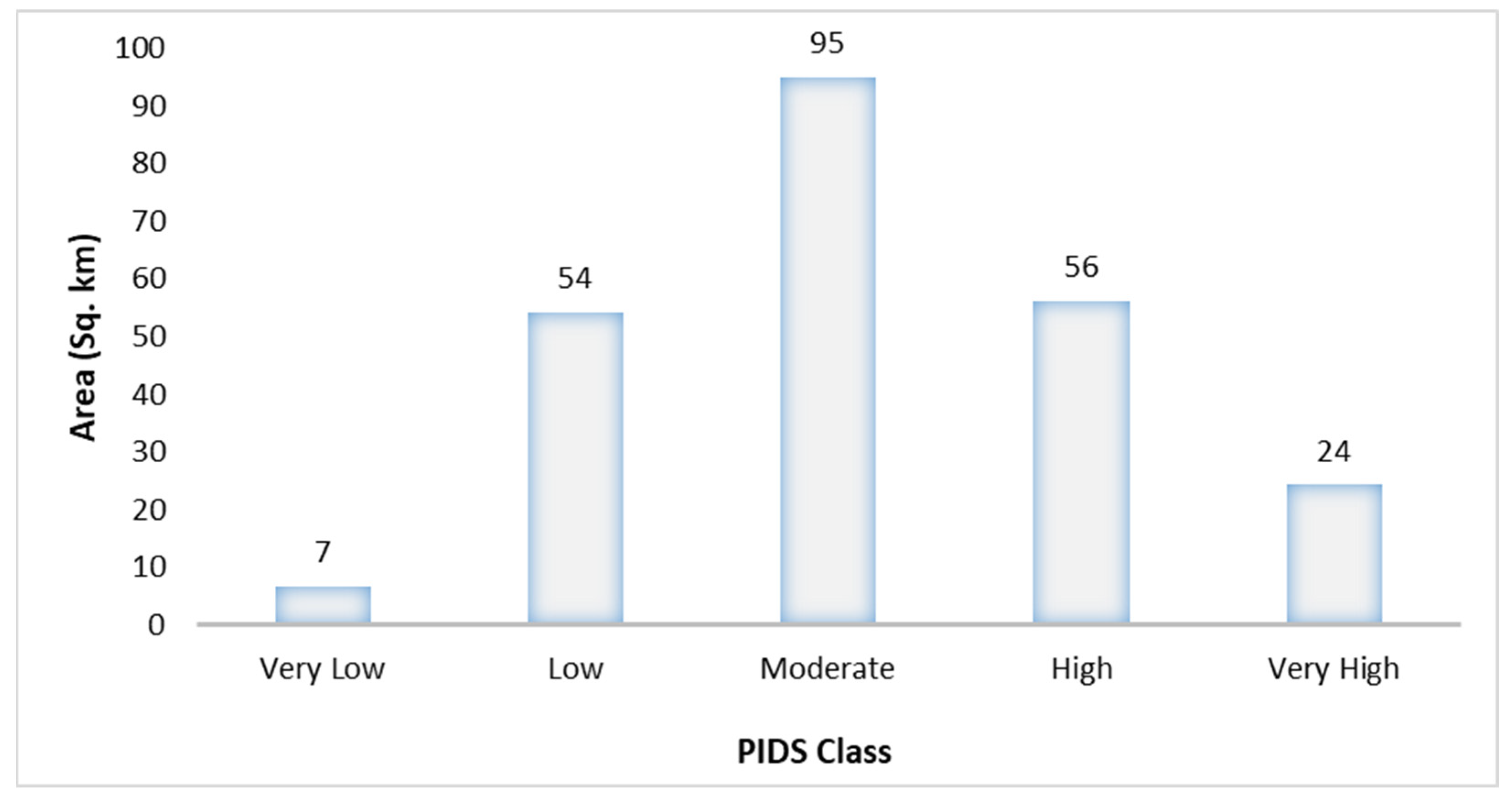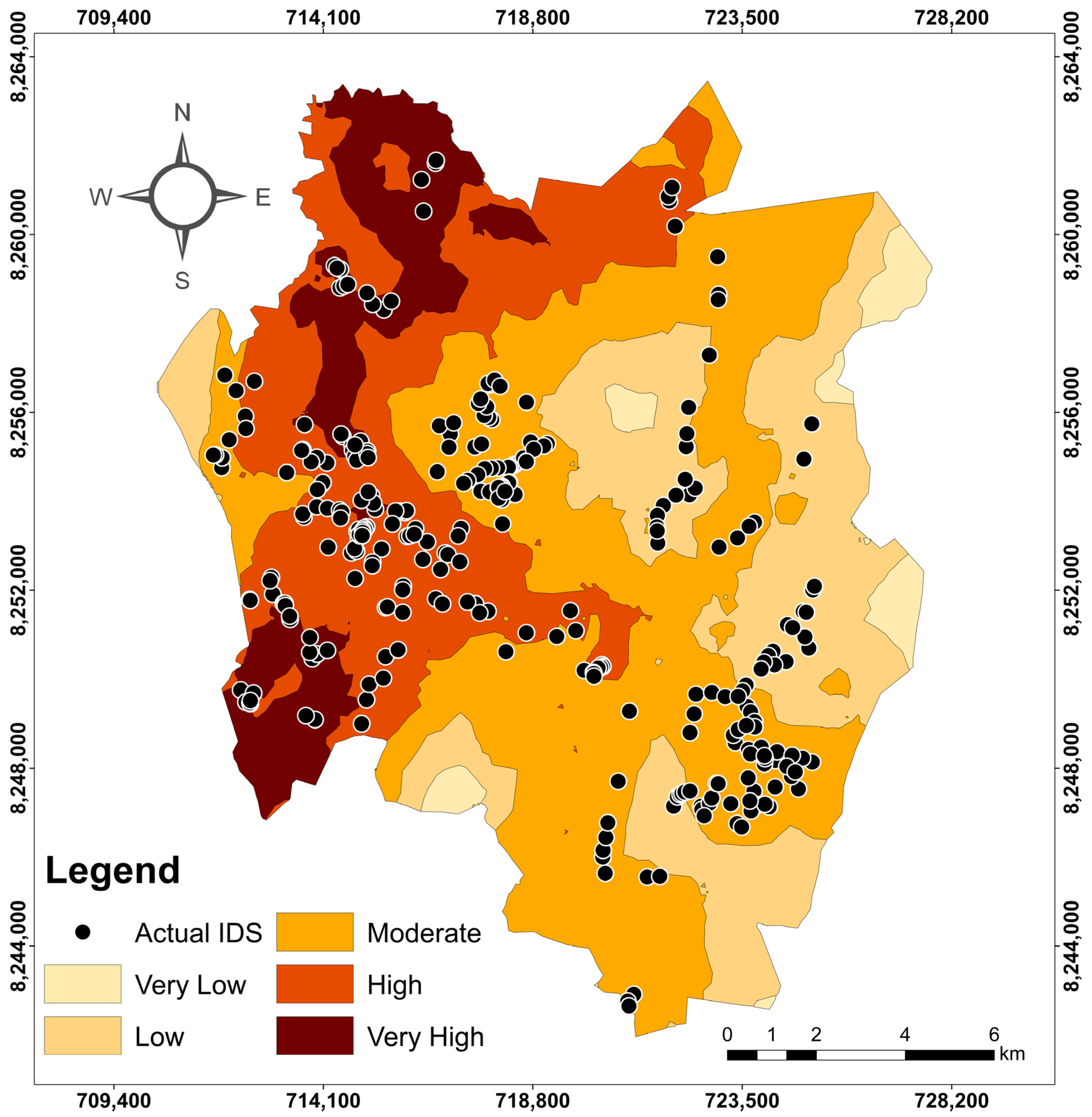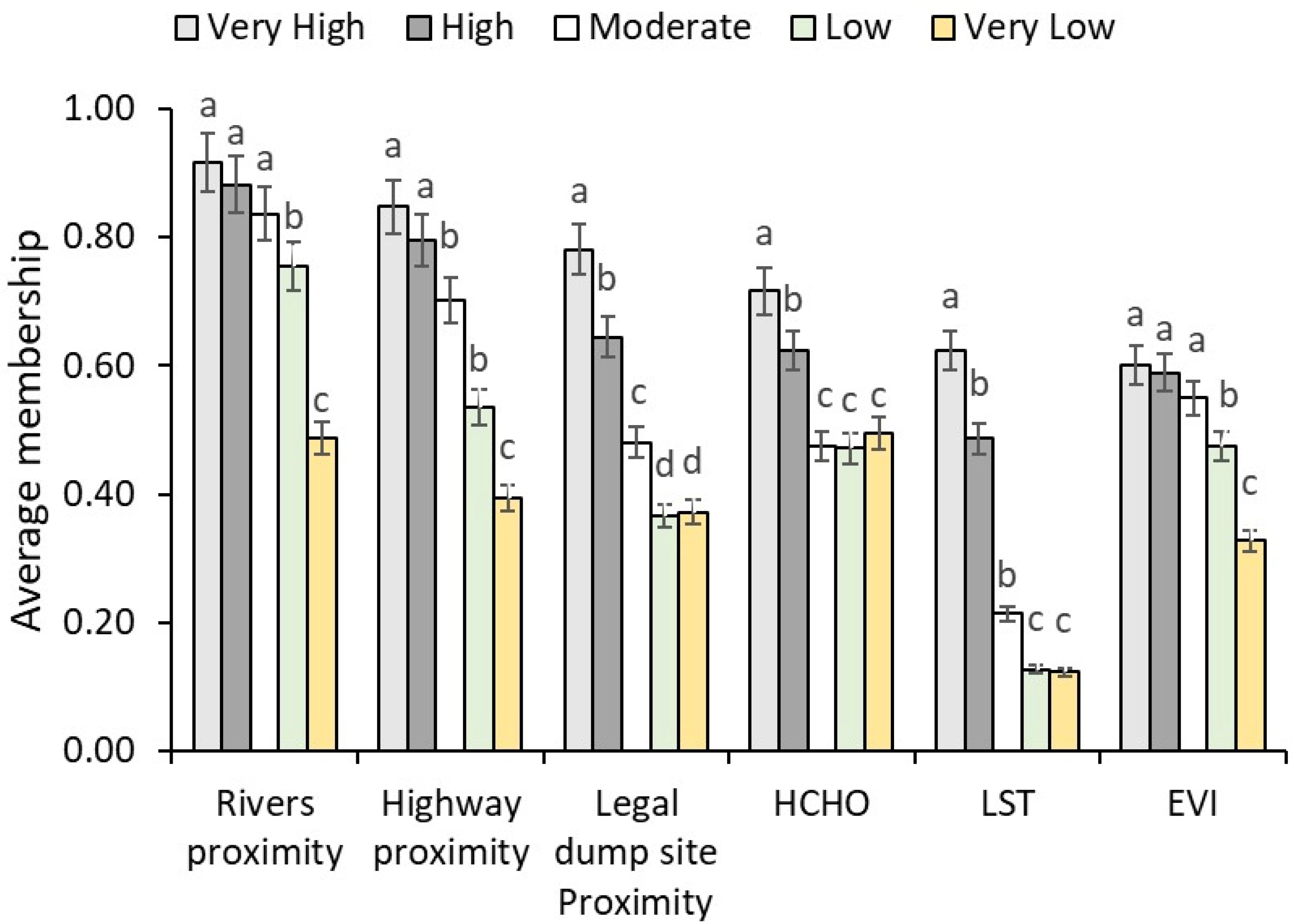1. Introduction
Solid waste management poses a significant global challenge that warrants urgent attention. Annually, global waste generation reaches 2 billion tons, with Sub-Saharan Africa contributing 174 million tons, a figure expected to triple by 2050 [
1]. In Sub-Saharan African countries like Malawi, waste management presents a considerable challenge because the volume of waste generated exceeds the government’s capacity to manage it effectively [
2]. Reference [
3] demonstrates that insufficient waste management, characterized by inadequate landfill facilities and low waste collection rates, has resulted in illegal disposal sites. Waste is frequently disposed of in vacant spaces, along roadways, rivers, public and private properties, and other unregulated locations [
4].
Multiple factors influence the prevalence of illegal dumpsites, including economic considerations [
5], social dynamics [
6], and policy and regulation [
7]. A combination of factors contributes to the emergence of unlawful disposal sites [
8]. Economic factors, including low incomes, may compel individuals to engage in illegal dumping due to the prohibitive costs associated with waste management services [
9]. This issue is especially evident in informal settlements, where high population density and inadequate facilities exacerbate the challenge of inadequate sanitation [
10], forcing residents to dispose of waste in unauthorized areas. Additionally, according to [
11], community practices and public awareness are essential in mitigating unlawful disposal. Individuals who lack awareness of the consequences of illicit dumping are more likely to participate in unauthorized waste dumping without regard for its effects [
12]. Reference [
13] reports that inadequate policies and regulations facilitate illegal waste dumping by indirectly incentivizing informal city dwellers to engage in unlawful waste disposal, following the minimal repercussions associated with such behavior.
Illegal waste disposal has a profoundly negative impact on human health, wildlife, and ecological systems. Illegal dumpsites have a considerable impact on water [
13], air [
14], and soil [
15]. Waste contaminants infiltrate groundwater sources, leading to water pollution and posing risks to human health [
16]. Reference [
17] demonstrates that the open burning of waste at illegal dumping sites emits harmful atmospheric pollutants, including greenhouse gases. The emission of gases at disposal sites, including methane, carbon dioxide, and hydrogen sulfide, contributes to environmental pollution [
18]. Illegal waste disposal contaminates soil with heavy metals and other pollutants, adversely affecting soil health [
19]. The reclamation and rehabilitation of illegal dumpsites entail significant economic costs due to land degradation and the high volume of illegal dumpsites requiring removal [
20]. Illegal dumpsites have considerable adverse effects on human health, serving as breeding grounds for rodents and vectors that facilitate the transmission of diseases such as cholera, malaria, leptospirosis, and typhoid fever [
21,
22]. Illegal dumping harms both wild and domestic animals by polluting their environments, spreading diseases, and damaging their natural habitats [
23]. To mitigate the negative impacts of these sites, it is essential to understand their locations and extent.
Mapping dumpsites has been crucial in both developed and developing countries. The status of dumpsites [
24], the suitability analysis of dumpsites [
25], the correlation between dumpsites and health [
26], and frequently disposed items [
27] are emphasized in spatial dumpsite mapping research. According to [
28], traditional and modern GIS methodologies employed in dump site studies provide critical visualizations to support decision-making. The study in [
29], conducted in India, used multi-criteria GIS analysis for mapping dumpsites. Moreover, [
30] mapped legal dumpsites in Malaysia, focusing on high-density areas. Similar spatial mapping of legal and illegal dumpsites is also reported in Asia [
31], Europe [
32], and North America [
33]. Developed countries [
34] dominate these studies, with a lesser focus on developing countries, such as Malawi. Reference [
13] reports that research on spatial dumpsite analysis is focused on identifying potential alternative legal dumpsites. According to [
35], mapping dumpsites must also focus on illegal dumpsites in the cities and surrounding townships.
Against this background, the current study aims to conduct a spatial analysis to identify illegal dumpsites in southern Malawi. The main objective is to assess the illegal dumpsites and the factors influencing their siting. This study provides crucial information about illegal dumpsites for sustainable waste management in cities, particularly in the context of the Green City Agenda.
4. Discussion
The observation that proximity to authorized dump sites significantly influences illegal dumping (
Figure 9) aligns with prior research indicating that the convenience and reduced transportation costs associated with nearby legal facilities can inadvertently encourage illicit waste disposal [
47]. This suggests that while authorized sites aim to centralize waste management, their presence can sometimes create “hot zones” for illegal waste disposal. Conversely, LST was found to have a lesser impact in this context, likely because its prominence as an indicator of environmental concern, particularly concerning gas release, is more pronounced in large, established landfills rather than the typically smaller, more dispersed sites often associated with illegal dumping [
53].
Prior studies consistently demonstrate that the closeness of rivers and highways significantly contributes to illegal dumping [
31,
47,
54]. This corresponds with observations of areas with very high and high probabilities of illegal dumping, which are directly associated with dense networks of rivers and roadways. Field surveys provide additional evidence for this phenomenon, revealing that many unlawful dump sites are near water bodies. These regions are typically defined as informal settlements that lack sufficient waste management infrastructure, including a shortage of collection centers and low collection rates [
55]. These settlements often do not receive regular waste management services from the city council, which worsens the issue.
In contrast, regions identified as having a minimal likelihood of illegal dumping generally correspond to formal, affluent neighborhoods. These areas typically experience adequate waste collection rates and are not susceptible to illegal dumping. Accessibility is a significant factor, as indicated by the moderate class of dumping probability. Although it is not as critical as the presence of rivers and highways, ease of access through road networks can still promote illegal dumping activities. This aligns with findings from other studies that emphasize denser road networks as a significant factor in enhancing the likelihood of unlawful dumping [
40,
43].
Proximity to rivers emerged as the most influential variable in identifying PIDS, consistent with [
55]. At the same time, proximity to highways emerged as the second most influential factor. This result is consistent with multiple previous studies [
46,
47,
48], indicating that easy access via road networks plays a crucial role in selecting illegal dumping locations. The convenience of simply pulling over and offloading waste near a highway makes these areas attractive for illicit activities. Interestingly, this study also found that distances to legal dumpsites are essential in mapping illegal disposal sites. This discovery, however, contradicts the findings of [
48], which concluded that the distance to a landfill was not a significant factor in mapping PIDSs. This discrepancy could be due to various reasons, such as differences in geographical context, the availability and accessibility of legal dumpsites in the respective study areas, or socioeconomic factors influencing waste disposal behaviors. This suggests that in the current study’s location, the presence or absence of nearby legal disposal options significantly impacts where illegal dumping occurs.
The predominance of points within the moderate classification, as opposed to the very high or high classifications, can be attributed to various factors, including land use patterns, population density [
46], and household income levels [
56] among other factors, which were not included in the current study. Their exclusion may limit the predictive accuracy of the current model, underscoring the significance of including socioeconomic and demographic factors in subsequent research to increase the predictability of illegal dumping sites.
Despite providing valuable insights into the factors influencing illegal dumping, the current study has several limitations. A notable gap arose regarding the influence of distance to legal dumpsites, with this study finding it to be an essential factor, directly contradicting previous research in [
48]. This variance could stem from contextual differences, including geographical variations, the specific availability and accessibility of legal disposal options in the study area, or unique socioeconomic dynamics influencing waste disposal behaviors. Furthermore, this study’s scope regarding LST was limited, as its lesser impact in this context may be due to its primary relevance to larger, established landfills and their associated gas release, rather than the smaller, more dispersed illegal dumping sites examined. While field surveys provided valuable qualitative data, the quantitative extent of their contribution to the overall analysis and the potential for sampling bias were not explicitly detailed. Characterizing “informal settlements” and “formal, affluent neighborhoods” could also benefit from more precise definitions and a deeper exploration of the socioeconomic factors in these areas that contribute to varying waste disposal behaviors. Finally, while this study identified hot zones for illegal activities, it did not explicitly propose specific intervention strategies tailored to these zones. It also did not delve into the potential effectiveness of improved waste management services in the identified vulnerable areas.
5. Conclusion and Future Insights
This study utilized remote sensing and GIS techniques to identify potential illegal dump sites (PIDSs) within Blantyre City. Our findings demonstrate the critical role of proximity to rivers and highways as primary drivers of illegal dumping, aligning with previous research that highlights the convenience and reduced transportation costs associated with disposing waste near these features. The prevalence of illegal dumping in areas characterized by dense river networks and major roadways was further corroborated by field surveys, which consistently located unauthorized dump sites in these vicinities. This study also revealed a strong correlation between illegal dumping and informal settlements, which often lack adequate waste collection services and infrastructure. Conversely, formal, affluent neighborhoods demonstrated a significantly lower probability of illegal dumping, attributed to their robust waste management systems. While proximity to authorized dump sites was also identified as a significant factor, possibly due to convenience, land surface temperature (LST) had a lesser impact, likely because its influence is more pronounced in larger landfill environments. Despite the effectiveness of the employed methodologies, limitations such as the exclusive focus on visible dumps identified within moderate zones and the absence of seasonal considerations in data collection suggest areas for future research. Integrating additional variables, accounting for seasonal variations, and leveraging advanced techniques like Unmanned Aerial Vehicles (UAVs) could further refine the accuracy of PIDS detection models. Ultimately, the consistent identification of proximity to rivers and highways as key indicators provides valuable insights for developing targeted interventions to mitigate illegal dumping in urban environments.

